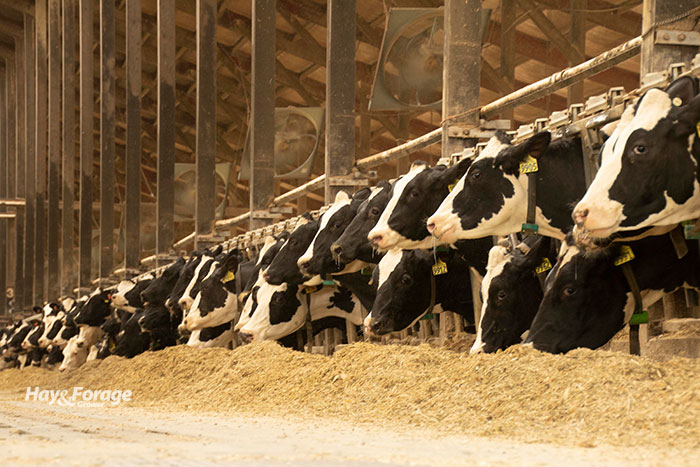
Laboratory forage analyses are like résumés. Despite a lack of job experience and list of skills, these test results promote crops as qualified candidates for livestock consumption and future performance. Even so, reported nutrient values and expected production are not guaranteed. Poor management can hinder forage potential.
In a recent article from the Miner Institute’s Farm Report, Rick Grant says that feeding forages with high levels of fiber digestibility leads to better dry matter intake and energy-corrected milk yield in dairy cattle. The president of the William H. Miner Agricultural Research Institute in Chazy, N.Y., goes on identify factors that exploit forage energy value.
Stay nimble and timely
The first factor Grant notes is the flexibility to consistently harvest high-quality forage. Researchers at Penn State University conducted a study to examine production practices on several dairy farms and determined which practices were consistently associated with high profits. They found the farms with diligent, yet flexible, styles of forage management reported the highest earnings.
“The single factor that differentiated high-profit herds was the ability to manage forage quality and inventory,” Grant asserts. “These high-profit herds could harvest at optimal maturity regardless of weather, and they had backup plans for when things didn’t work.”
Adaptability is key to harvesting forage at the optimal maturity, especially because of how quickly forage quality can decline. Data from Cornell University shows neutral detergent fiber digestibility (NDFD) of alfalfa in a field can fall by 0.5 to 1 full percentage unit per day, and the NDFD of grass forages diminishes even faster.
In addition to maximizing forage’s fiber digestibility, focusing on starch digestibility is necessary, too. Corn silage is the main forage crop in many parts of the U.S., and 60% to 65% of its digestible nutrients come from starch and other nonfiber components. To make sure cattle have access to these nutrients, corn silage must be processed and stored properly.
“The main factors that affect starch digestibility, in order of importance, are particle size, moisture content, and endosperm type,” Grant says. “An additional and critical consideration is waiting three to four months before opening a silo so the starch has sufficient time to ferment.”
Better bunks
Another factor Grant recognized was feedbunk management. Targeted allocation of forages can boost forage energy efficiency because dairy cattle demand different levels of nutrients during different stages of lactation. Segregate forages and feed cows according to their specific needs.
“We all know that higher-producing cows respond better to higher NDFD forages than do lower-producing, later-lactation cows,” Grant states. “We also need to understand feeding highly digestible corn silages can actually reduce milk yield in lower-producing cows. Allocation of forage by production level will always squeeze more milk from a farm’s forage inventory.”
Feedbunks must continue to be monitored even after cattle have been fed. Overcrowding stalls or leaving feedbunks empty could cause the animals’ rumen pH to decline. This slows the activity of fiber-digesting microbes, which limits how much energy cattle can obtain from forage.
To prevent this from happening, Grant recommends feeding cattle two times a day and pushing feed up in the bunks to ensure animals have easy access to it. Overall, he concludes these tactics, along with better harvest and storage management, support optimal production.
“We are constantly improving our ability to measure and predict the effects of fiber digestibility and forage quality on cow performance and health,” Grant notes. “As our technical ability to unlock the energy potential of forages increases, let’s be sure that poor feeding management doesn’t stand in the way.”

Amber Friedrichsen served as the 2021 Hay & Forage Grower editorial intern. She currently attends Iowa State University where she is majoring in agriculture and life sciences education-communications and agronomy. Friedrichsen grew up on her family’s diversified crop and livestock farm near Clinton, Iowa.

